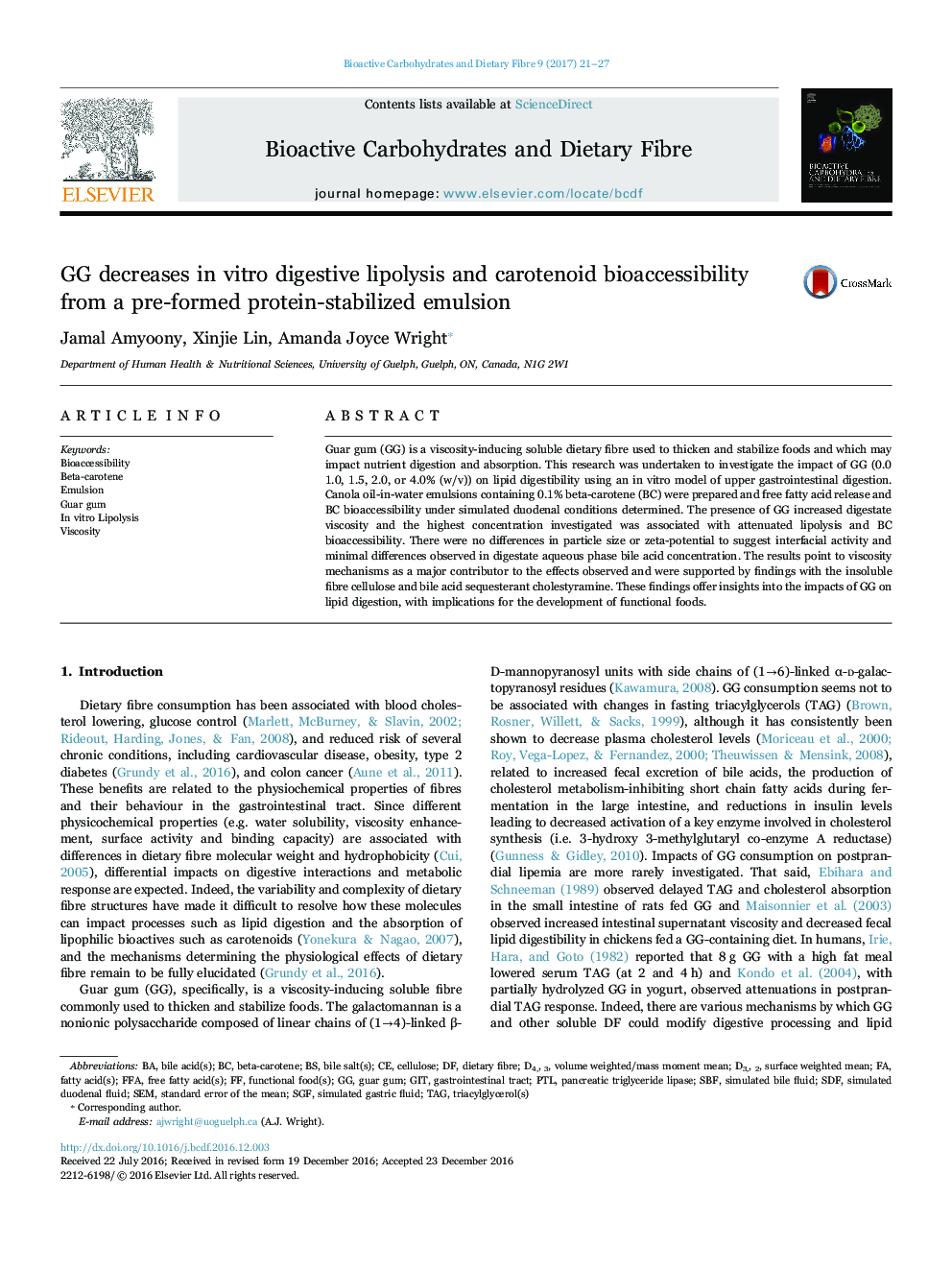| Article ID | Journal | Published Year | Pages | File Type |
|---|---|---|---|---|
| 5431411 | Bioactive Carbohydrates and Dietary Fibre | 2017 | 7 Pages |
â¢In vitro digestion of a protein-stabilized oil-in-water emulsion was studied.â¢Guar gum reduced TAG lipolysis and beta carotene bioaccessibility.â¢Effects were related to digestate viscosity and bile acid interactions.
Guar gum (GG) is a viscosity-inducing soluble dietary fibre used to thicken and stabilize foods and which may impact nutrient digestion and absorption. This research was undertaken to investigate the impact of GG (0.0 1.0, 1.5, 2.0, or 4.0% (w/v)) on lipid digestibility using an in vitro model of upper gastrointestinal digestion. Canola oil-in-water emulsions containing 0.1% beta-carotene (BC) were prepared and free fatty acid release and BC bioaccessibility under simulated duodenal conditions determined. The presence of GG increased digestate viscosity and the highest concentration investigated was associated with attenuated lipolysis and BC bioaccessibility. There were no differences in particle size or zeta-potential to suggest interfacial activity and minimal differences observed in digestate aqueous phase bile acid concentration. The results point to viscosity mechanisms as a major contributor to the effects observed and were supported by findings with the insoluble fibre cellulose and bile acid sequesterant cholestyramine. These findings offer insights into the impacts of GG on lipid digestion, with implications for the development of functional foods.
Graphical abstractDownload high-res image (153KB)Download full-size image
